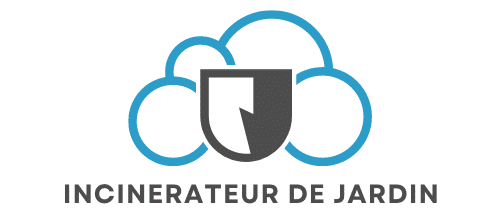What are the best practices for integrating SSO (Single Sign-On) in an enterprise environment?

In the ever-evolving world of technology, managing countless user identities and access permissions becomes an immense challenge for businesses. One solution to streamline this process is Single Sign-On (SSO), a user authentication service that allows a user to use one set of login credentials to access multiple applications. The beauty of SSO lies in its simplicity, creating a seamless experience for users while enhancing security and easing identity management for businesses. However, implementing SSO in an enterprise environment requires careful planning, an understanding of the technology and adherence to best practices.
Understanding the Importance of SSO in Enterprise Environment
Single Sign-On or SSO is not merely a convenience feature. It is an essential security and productivity tool that can transform how businesses handle user authentication and access management. In essence, SSO is like a passport. A user signs in once, and that single identification is trusted across multiple applications.
Avez-vous vu cela : What are the steps to configure a highly available PostgreSQL cluster using Patroni?
Integrating SSO offers numerous benefits. It enhances user experience by reducing password fatigue, it improves security by minimizing the risk of lost or stolen credentials, and it simplifies identity and access management for IT teams. However, as with any technology, SSO implementation should be carried out with careful planning following best practices to ensure effective and secure use.
Best Practices for SSO Implementation
While implementing SSO, it's essential to adopt a structured approach. Here are five best practices that you should consider to ensure a successful integration.
Dans le meme genre : Mastering twitter scraping: tools and techniques uncovered
Choosing the Right SSO Solution
The very first step in implementing SSO is choosing the right provider. Consider factors such as the number of users, the range of applications to be integrated, cloud or on-premise deployment, and compatibility with existing systems. Seek solutions that support standard protocols like Security Assertion Markup Language (SAML) or OpenID Connect for optimal interoperability and security.
Secure User Authentication
Although SSO simplifies login processes, it's crucial to ensure robust user authentication. Implement multi-factor authentication (MFA) alongside SSO to add an extra layer of security. MFA requires users to provide two or more verification factors, significantly reducing the risk of unauthorized access.
Consistent Application Onboarding
Consistency is key when it comes to integrating new applications into the SSO environment. Develop a standard process for onboarding new applications and ensure all applications comply with your enterprise's security requirements. Regularly review and update this process as technology and business needs evolve.
Regular Auditing and Monitoring
With SSO, auditing and monitoring become more critical than ever. Regular audits of access rights and usage can help detect any unusual activity and prevent potential security breaches. Moreover, monitoring can provide insights into user behavior, helping to further refine and improve the SSO service.
Employee Training and Awareness
Remember, technology alone cannot guarantee security. It's equally important to invest in training and awareness programs for users. Help them understand the importance and benefits of SSO and their role in maintaining security.
Choosing an Identity Provider (IdP)
A crucial aspect of SSO implementation is choosing your Identity Provider or IdP. The IdP is the system that authenticates users' identities and sends the user data to the service provider (SP), granting them access to the application. It's like the gatekeeper in your SSO system.
The choice of IdP can depend on various factors, such as the size of your enterprise, the number and type of applications used, and specific security requirements. Select an IdP that offers robust security measures, supports standard SSO protocols, and is compatible with your existing systems.
Leveraging Cloud-based SSO
In today's digital age, cloud-based SSO solutions are gaining popularity, and for good reasons. Cloud-based SSO offers scalability, simplicity, and cost-effectiveness, making them an excellent choice for businesses of all sizes.
Cloud-based SSO providers manage all the complex back-end infrastructure, allowing businesses to focus on their core operations. They also offer flexible pricing models, making them affordable even for small businesses. Furthermore, cloud-based SSO is easy to scale, allowing businesses to quickly and easily add or remove users or applications as needed.
However, remember to consider security in your decision. While cloud-based SSO providers generally offer robust security measures, it's always a good idea to verify their security protocols, data privacy policies, and compliance with industry regulations.
Understanding SSO Protocols: SAML, OpenID Connect, and Others
In the SSO world, protocols are like languages that enable different systems to communicate effectively. Understanding these protocols is crucial for successful SSO integration.
Security Assertion Markup Language (SAML) and OpenID Connect are two of the most commonly used protocols in SSO implementations. SAML is an XML-based protocol used for exchanging authentication and authorization data between an identity provider (IdP) and a service provider (SP). OpenID Connect, on the other hand, is a simple identity layer on top of the OAuth 2.0 protocol, which allows clients to verify the identity of an end-user.
Both these protocols have their strengths and limitations. While SAML is widely used and offers robust security features, it can be complex to implement. On the other hand, OpenID Connect is simpler and more flexible but may not offer the same level of security as SAML in some scenarios. The choice between these protocols can depend on your specific business needs and security requirements.
Implementing SSO in an enterprise environment is not a straightforward task. It requires careful planning, understanding of the technology, and adherence to best practices. However, with the right approach and tools, SSO can significantly enhance user experience, improve security, and simplify identity and access management.
Overcoming Potential Challenges of SSO Implementation
Single sign-on has revolutionized access management for enterprises, but like every technology, it comes with its set of challenges. Understanding these challenges and devising strategies to overcome them is crucial for a successful SSO implementation.
User Privacy Concerns - As SSO requires a centralized management of access credentials, some users might have privacy concerns. It is essential to educate the users about the security benefits of SSO and how their data is protected. Clear, transparent communication can help alleviate these concerns.
Service Provider Compatibility – Not all service providers (SP) may support your chosen SSO solution or protocol. This can limit the range of applications that can be integrated with your SSO system. It's essential to select an SSO solution that is widely compatible and supports standard protocols like SAML and OpenID Connect.
Downtime Risks - If your SSO system goes down, it could potentially lock users out of all applications. To mitigate this risk, establish a robust disaster recovery plan. Opt for SSO solutions that promise high availability and reliability.
Single Point of Failure - While SSO can enhance security by reducing the number of credentials that can be lost or stolen, it also represents a single point of failure. If a user's SSO credentials are compromised, an attacker could gain access to all linked applications. Implementing multi-factor authentication can add an extra layer of protection.
User Training - Many users are accustomed to signing in to each application separately. Switching to an SSO system can be a significant change for them. It's crucial to invest in user training to ensure a smooth transition and maximize the benefits of SSO.
In conclusion, Single Sign-On has become an indispensable tool in the ever-evolving technology landscape. By allowing users to access multiple applications with a single set of credentials, it simplifies user experience and reduces the burden of identity and access management. Adding to this, SSO also enhances security by minimizing the risk of lost or stolen credentials.
However, a successful SSO implementation is not merely about selecting the right SSO solution or identity provider. It also involves overcoming potential challenges, ensuring secure user authentication, maintaining consistent application onboarding, and conducting regular audits. It's equally important to invest in user training and awareness programs to help users understand the importance of SSO and their role in maintaining security.
Remember, the journey to a successful SSO implementation may seem complex, but it's definitely worthwhile. With careful planning, understanding of the technology, and adherence to best practices, SSO can truly transform your enterprise's identity and access management, thus leading to enhanced productivity and security. Therefore, it's high time that businesses embrace SSO and reap its manifold benefits.
